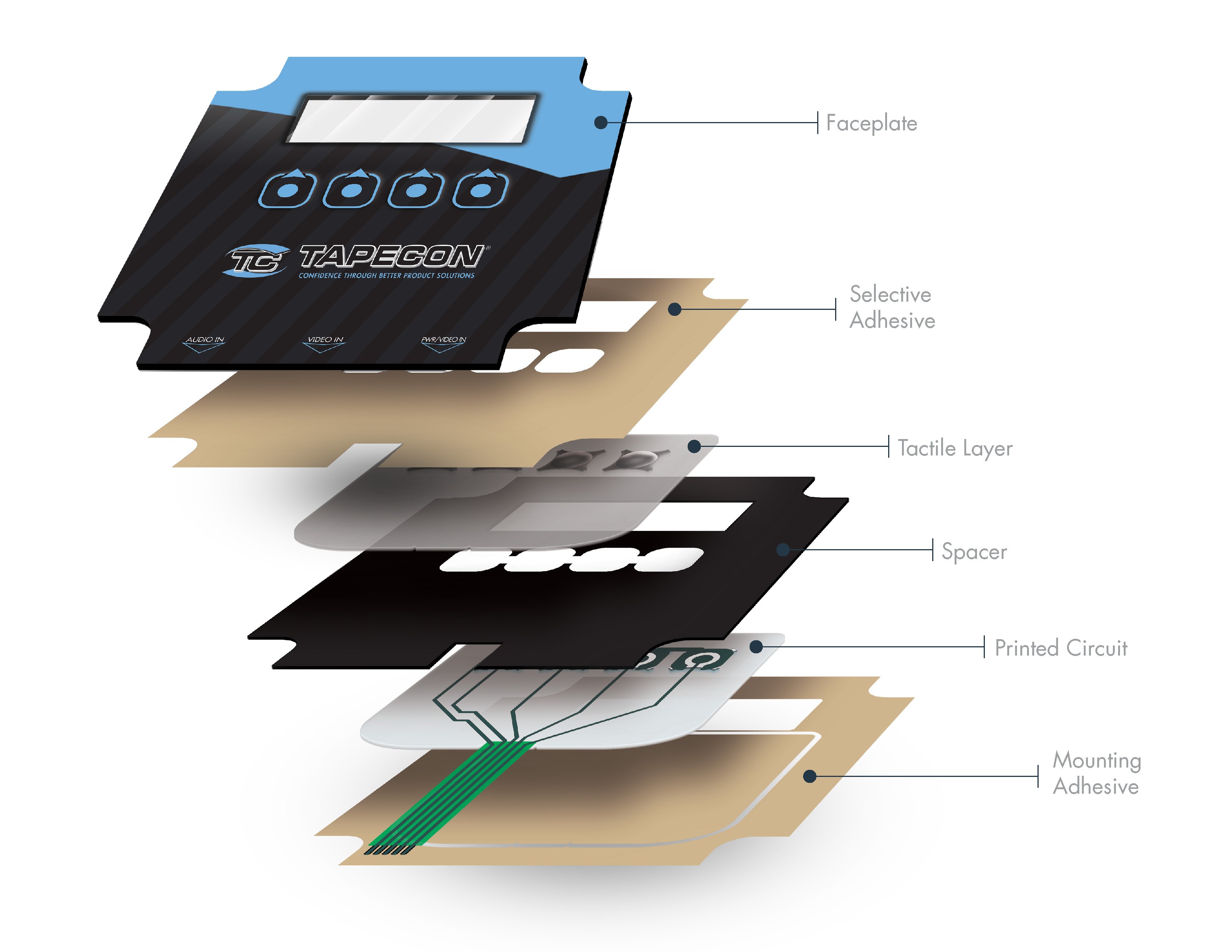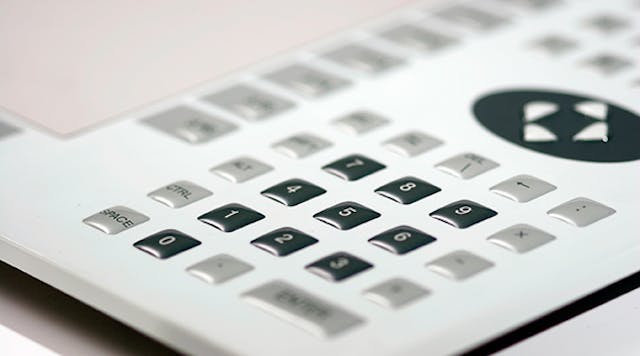Membrane Switches vs. Traditional Switches: What You Need to Know
Membrane Switches vs. Traditional Switches: What You Need to Know
Blog Article
Understanding the Relevance of Membrane Switches in Interface
Membrane switches are indispensable components in the style of reliable customer interfaces, facilitating not just capability yet additionally enhancing visual allure and user communication. As we explore the different benefits and future fads associated with Membrane innovation, it comes to be clear that these buttons are much more than simply elements; they represent a merging of development and usefulness.
What Are Membrane Switches?

The spacer layer, which includes sticky buildings, enables the separation of the circuit layer from the overlay, guaranteeing that the button remains in a non-activated state till pushed. When stress is related to the overlay, it compresses the spacer layer, linking the space and completing the circuit in the underlying layer. This style not only decreases the physical space needed for traditional mechanical switches but likewise enhances the longevity of the device, as Membrane switches are generally immune to dirt, wetness, and various other ecological aspects.
Typically discovered in applications ranging from customer electronics to medical gadgets, Membrane switches are integral to contemporary technology, providing a easy to use and effective interface that aligns with contemporary design requirements.
Benefits of Membrane Switches
While many switch technologies exist, Membrane Switches offer distinct benefits that make them particularly preferable in numerous applications. Among the key benefits of Membrane buttons is their small design, which permits space-saving implementations in tools where realty is limited. Their slim profile not just improves aesthetic appeal yet likewise helps with lightweight construction.
One more substantial benefit is their resistance to environmental factors. Membrane buttons are normally secured against dampness, dust, and impurities, making them suitable for usage in demanding settings, such as medical gadgets and industrial equipment. This durability expands the life-span of the switch, decreasing maintenance expenses and enhancing reliability.
Additionally, Membrane buttons can be customized to meet specific design needs, integrating special graphics and shades that enhance customer communication. Their responsive responses alternatives can additionally be tailored to offer a gratifying customer experience. Furthermore, Membrane switches are cost-effective, specifically in high-volume applications, as they can be produced successfully.
Applications in Different Industries

In the customer electronics field, Membrane switches prevail in devices such as microwaves, cleaning equipments, and push-button controls. Their responsive comments and aesthetic alternatives boost user experience while giving a streamlined, modern appearance. Furthermore, auto makers make use useful source of Membrane buttons in dashboard controls and infomercial systems, where space is limited, and individual interaction is essential.
Moreover, the commercial market leverages Membrane switches in control panels more tips here for machinery and equipment, enabling for instinctive operation in usually extreme atmospheres. Their resistance to chemicals and dampness ensures longevity and reliability in these applications. In general, the adaptability of Membrane Switches adds substantially to their widespread usage, making them important in different technological domains.
Layout Considerations for Membrane Switches

When developing Membrane buttons, a number of crucial considerations must be considered to make certain optimum functionality and individual experience. First of all, the option of materials is crucial; picking durable, top notch substrates can boost the button's longevity and resistance to ecological elements such as moisture and temperature level changes.
Secondly, the layout of the graphic overlay must prioritize clearness and ease of use. Icons and message should be legible, and the format ought to promote user-friendly communication (membrane switches). Furthermore, tactile comments is vital; including a responsive dome or other systems can improve the customer experience by giving physical confirmation of activation
An additional crucial aspect is the switch's electric efficiency. Designers should guarantee that the conductive traces are effectively created to minimize resistance and stay clear of signal disturbance. This includes evaluating the needed actuation force and ensuring compatibility with the electronic components they will interface with.

Future Fads in Membrane Technology
As modern technology proceeds to advancement, Membrane buttons are positioned to develop significantly, driven by technologies in products and manufacturing methods. One arising pattern is the consolidation of innovative materials, such as adaptable substratums and conductive inks, which boost sturdiness and minimize the general weight of Membrane switches. These materials not just improve the responsive reaction yet likewise enable the style of switches that can withstand harsher ecological problems.
Furthermore, the assimilation of touch-sensitive technologies is changing standard Membrane Switches right into even more interactive interface. Capacitive touch sensors embedded within Membrane button panels can supply a more intuitive and receptive individual experience, straightening with the growing demand for streamlined, modern-day styles in visit the website customer electronics.
Furthermore, advancements in printing methods, such as digital and 3D printing, enable rapid prototyping and customization of Membrane buttons. This flexibility permits makers to respond quicker to market needs and consumer choices.
Last but not least, sustainability is becoming a substantial emphasis, with suppliers discovering environmentally friendly products and procedures. As these patterns unfold, the future of Membrane technology assures improved performance, visual charm, and ecological duty, solidifying their duty in innovative user interfaces across various industries.
Conclusion
Finally, Membrane Switches stand for an essential part in the layout of interface, combining performance with visual flexibility. Their benefits, consisting of toughness and resistance to environmental elements, make them suitable for varied applications throughout numerous markets. Thoughtful style factors to consider improve user interaction and experience. As developments in technology proceed, the advancement of Membrane switches is expected to further fine-tune interface, driving innovation and improving functionality in a significantly intricate technical landscape.
Membrane switches are essential components in the style of reliable customer interfaces, facilitating not just functionality yet additionally improving visual appeal and user communication.Membrane Switches serve as a crucial element in different user interfaces, helping with a smooth communication in between individuals and electronic devices.While many switch modern technologies exist, Membrane Switches deal unique benefits that make them specifically desirable in various applications.Moreover, Membrane buttons can be personalized to meet particular design requirements, incorporating one-of-a-kind graphics and shades that boost individual communication.In verdict, Membrane Switches represent an important component in the style of individual interfaces, combining capability with visual versatility.
Report this page